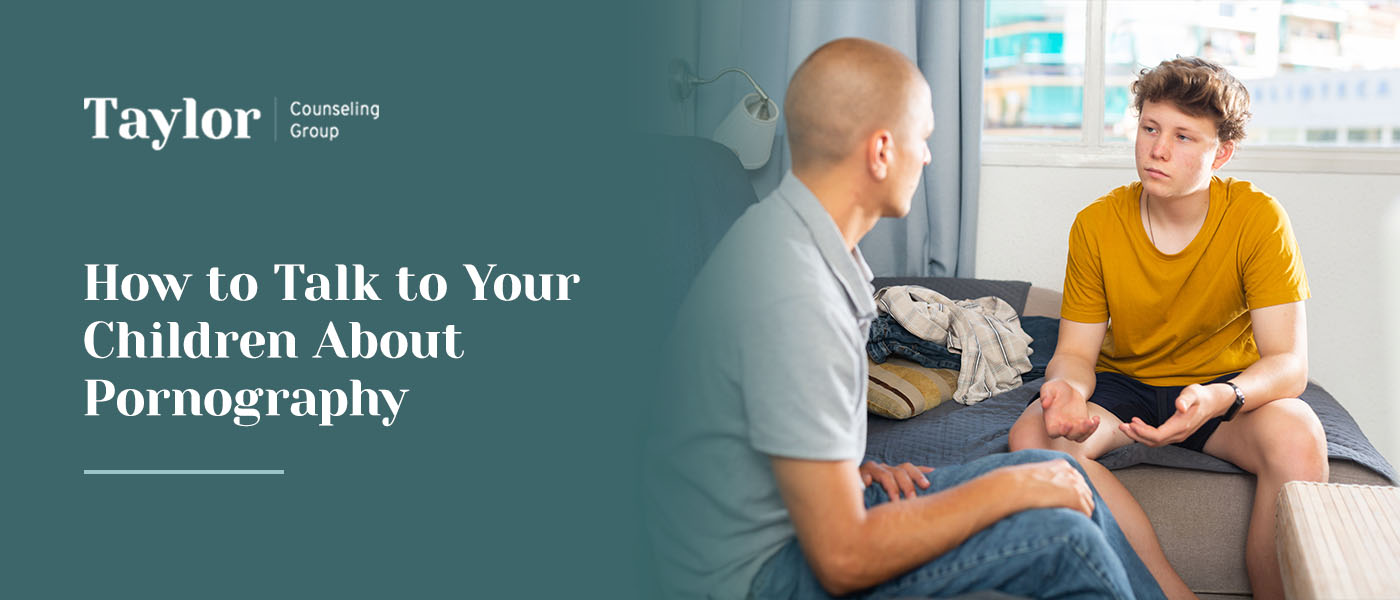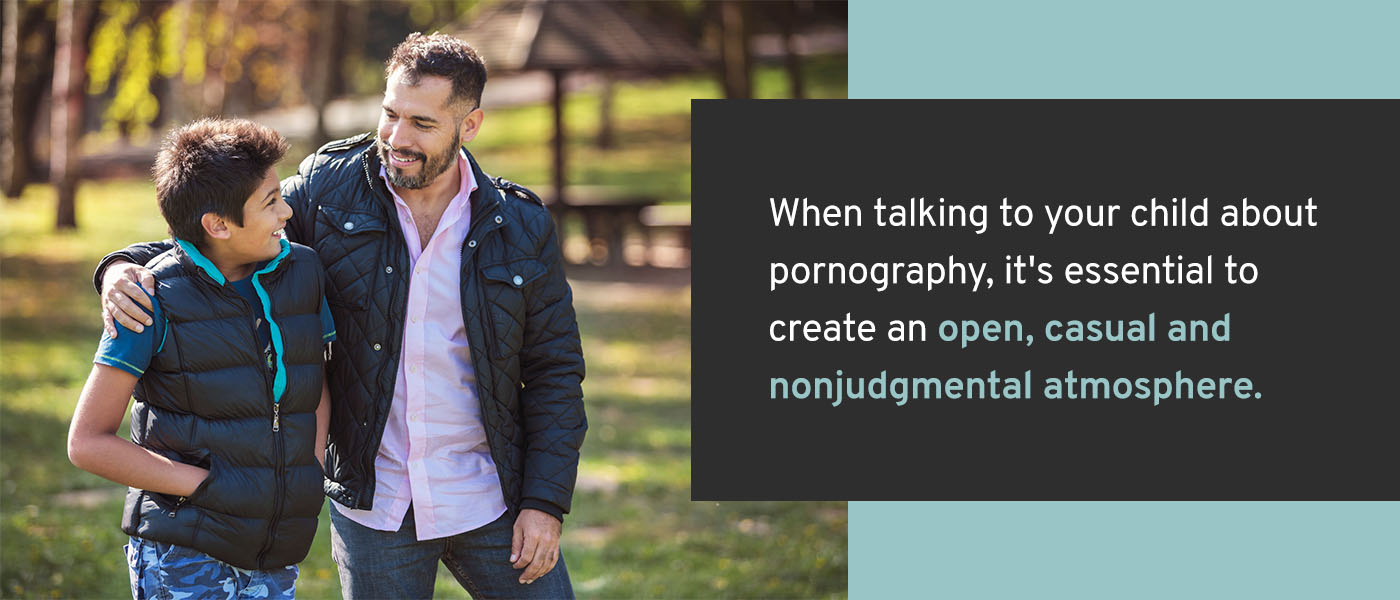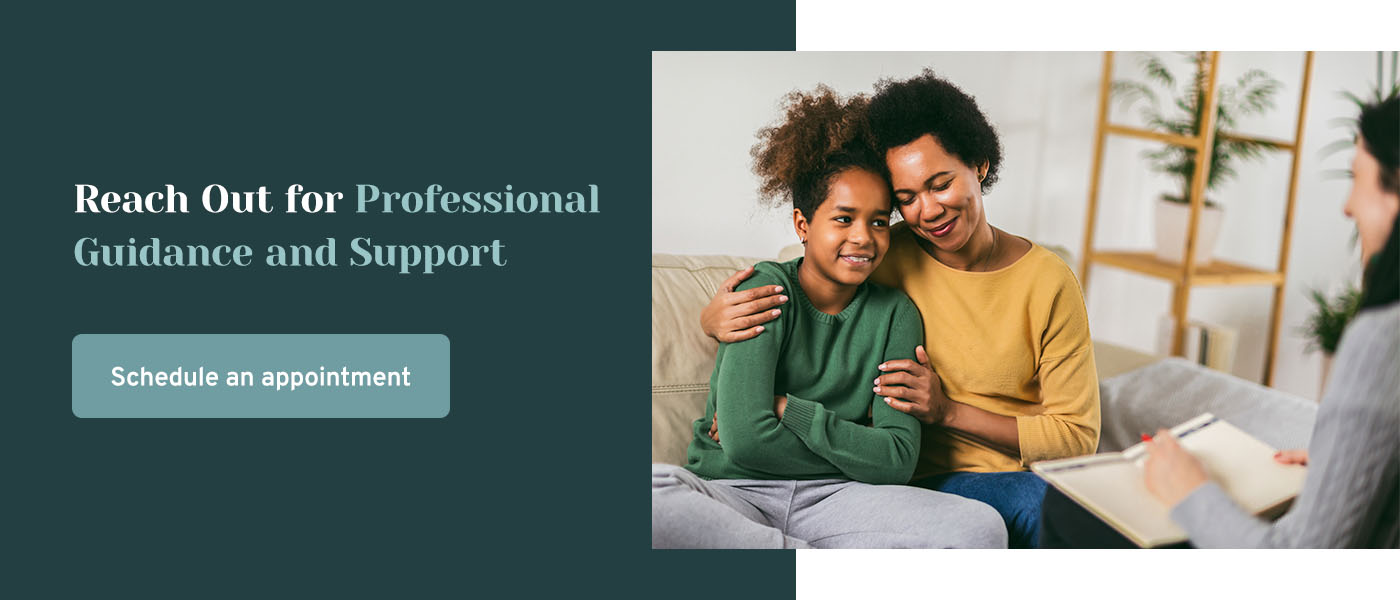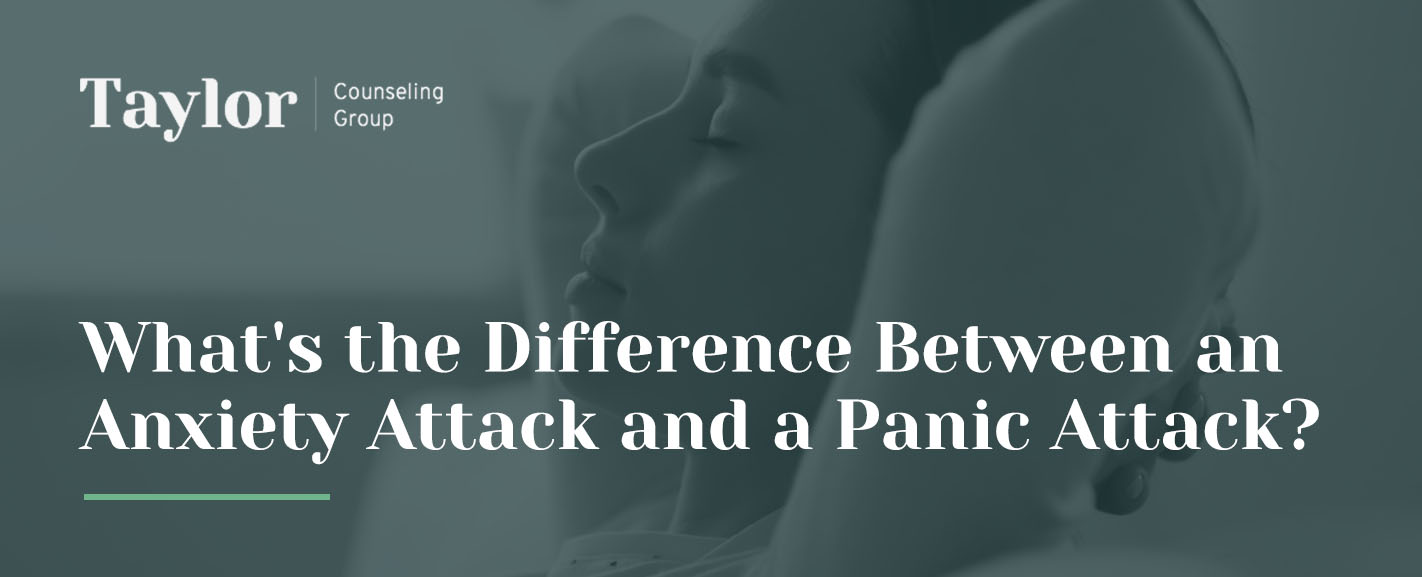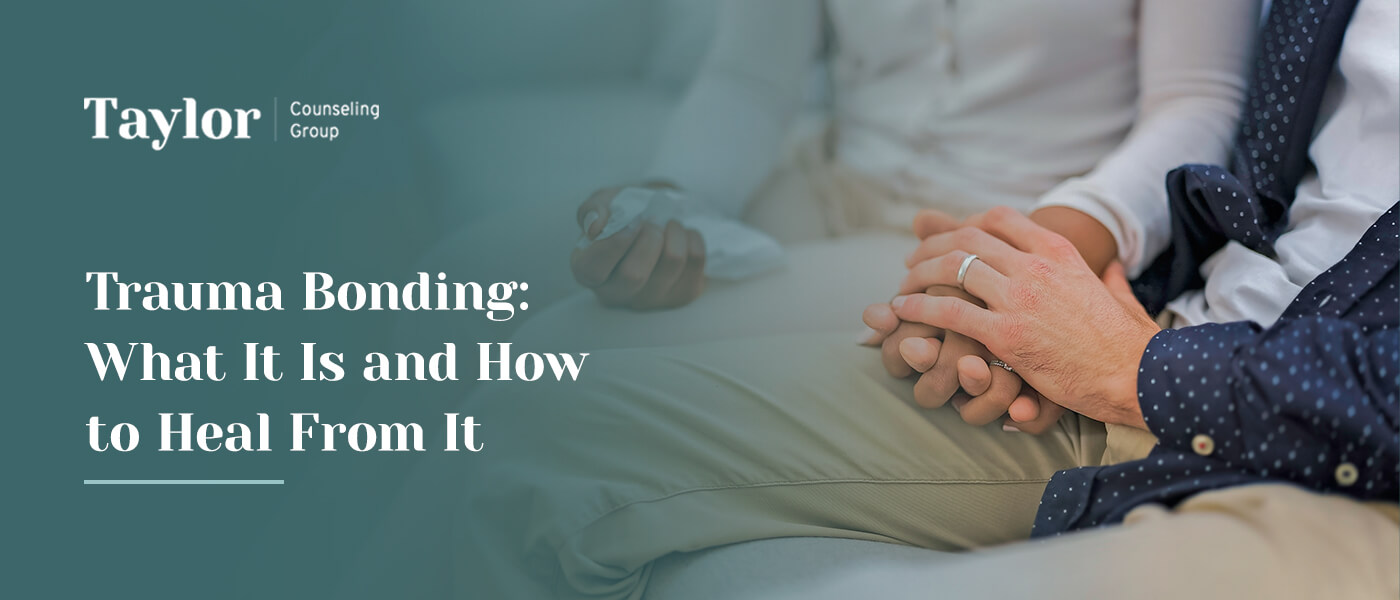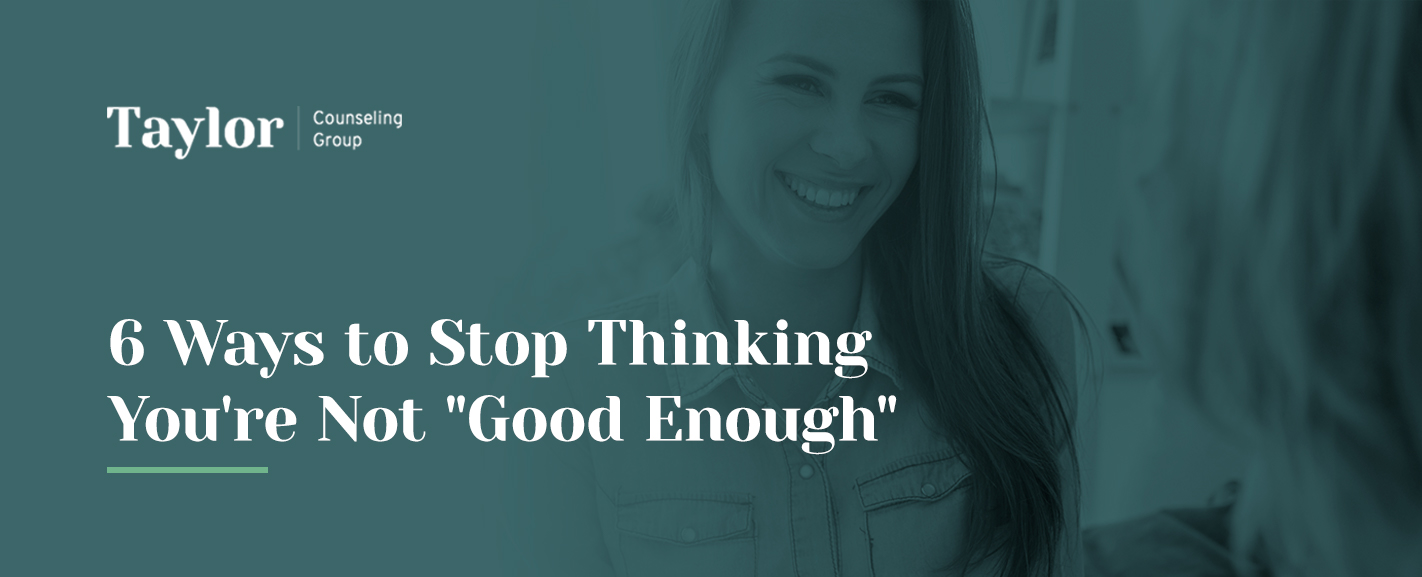With pornography easily accessible on all digital devices and social media use soaring, it’s inevitable that children will be exposed to it at some point. It could accidentally appear on a phone or iPad with just a click of a button. While the topic may seem uncomfortable to a parent, addressing it early with your child can foster healthy attitudes, contribute to better media literacy and help keep your child safe.
Continue reading to discover strategies for discussing pornography with your children healthily and helpfully.
Table of Contents
- Why It’s Important to Have a Discussion About Pornography
- Tips for Talking to Your Children About Pornography
- Reach Out for Professional Guidance and Support
Why It’s Important to Have a Discussion About Pornography
While you should take action to minimize the chances of children accidentally discovering pornography, the fact is that they can quickly encounter it no matter what you do. Many children stumble upon explicit content unintentionally or are introduced to it by a friend or classmate without understanding what they are viewing. This can affect their overall perspectives on sexuality, relationships and consent.
Pornography can also, in some cases, have an adverse impact on emotional and mental health — leading to feelings of shame, guilt and confusion. Children can be exposed to unrealistic, distorted and violent images of sex that can influence their attitudes and expectations about gender roles, consent and intimacy. It can also impact self-esteem and body image.
Overall, discussing pornography can help your child:
- Process emotions and safeguard their emotional well-being.
- Learn to recognize and avoid harmful or unsuitable content.
- Gain a realistic understanding of sex.
- Develop healthier perceptions toward sex, consent and relationships.
By creating a safe space for honest conversation, you can support your child in processing their feelings and understanding that it is normal to experience various emotions related to sexual content. Ultimately, the discussion can help identify any potential issues in your child early and encourage them to seek help if necessary.
Tips for Talking to Your Children About Pornography
While it can feel stressful to talk to your child about pornography, having a few talking points in mind can help you through the process. Keep in mind that you know your child best, and however you approach the subject, it should be in a way you will both be comfortable with. Here are a few strategies you can use to talk to your children about pornography.
Create an Open and Comfortable Space to Talk
When talking to your child about pornography, it’s essential to create an open, casual and nonjudgmental atmosphere. Approach them while doing tasks, such as running errands or going for a walk. This allows them to avoid eye contact, which can feel uncomfortable. They might also feel more receptive and less likely to end the conversation early.
To begin an honest dialogue, try these tips:
- Acknowledge that your child might feel uncomfortable or embarrassed to discuss the topic with you.
- Reassure them that it’s OK to have curiosity about sex as they grow older.
- Tell your child that pornography is not something everyone watches, and they shouldn’t feel pressured to view it.
- Reassure that your child can talk to you if they feel uncomfortable after viewing pornography.
Delay Exposure
While challenging, your first priority as a parent is to delay your children from seeing porn as long as possible. As their brains develop, seeing potentially disturbing material could be damaging. Though it is unrealistic to control everything your child sees online, you might employ parental controls or limit their screen time as a preventive measure.
For instance, you might limit your child’s screen use to a computer in living areas and not allow them to use a phone in their room. It’s also critical that older teens or adults clear their browsing history if viewing pornography in the home.
Be Simple and Direct
If you are comfortable, try discussing pornography with your child before they might be exposed to it. That way, they are prepared in the event they see porn online or from friends or classmates. Use the correct terms for body parts and explain sex in a direct way. They might ask questions or express shock or disgust. Let them know that their feelings are valid and answer their questions honestly.
For example, you might say something like, “I know you might encounter porn at some point, so here is what you need to know.” You can also let them know they can go to you if they have any questions about sex. The goal is to let them know the damaging effects that can come from watching porn when compared to actual sex, not to stigmatize or moralize.
Avoid Shaming
When talking about porn, you must leave shame out of the discussion. Mixing sexual curiosity with shame can very easily lead to unwanted results. So, let them know that their potentially positive reactions are normal and that they shouldn’t feel ashamed about their curiosity. If you shame your child for these feelings, they may be less likely to discuss other issues surrounding pornography.
Talk About Porn vs. Sex
In your conversation about porn, you must help your child understand how it differs from real-life sex. Otherwise, they might expect their first sexual encounter to resemble pornography, which is problematic.
Ensure that your child recognizes how pornography is a fantasy, pointing out the following:
- Bodies in pornography are often altered.
- Pornography is staged to look a specific way.
- Pornography is not a private encounter.
- The sex in porn is usually rough and without intimacy.
- Most male porn actors are well-muscled.
- Most female porn characters are slender and curvaceous.
- Most female porn characters do what they are told without regard to comfort or their consent.
- Most sex in pornography does not include safe sex precautions, such as birth control methods.
Promote a Discussion About Safe Sex and Consent
Children and teens who get their information about sex from porn can have confusing and unhealthy perceptions. Research shows both women and men can be negatively impacted by viewing porn in how it affects self-esteem and self-perception. Additionally, boys might assume girls are always ready to have sex, which can lead to issues with consent in real-life situations.
Therefore, use this discussion to discuss safe sex and the importance of consent. Ultimately, the conversation should promote healthier and more realistic attitudes and beliefs about sex.
Know When to Seek Professional Help
Sometimes, despite your best efforts, viewing pornography can lead to unhealthy behaviors in children. Seek professional help if your child displays the following behavior:
- Avoids making connections and developing romantic relationships
- Spends an excessive amount of time viewing porn, to the point it interferes with other areas of life
- Talks about viewing porn and appears disturbed or stressed
Reach Out for Professional Guidance and Support
While discussing pornography with your child can feel uncomfortable, following these tips can help make the process easier. Over time, the conversation can foster an environment of trust and open dialogue about important topics like safe sex, consent, relationships and media literacy.
If you need further help opening a discussion, Taylor Counseling Group can help you take the first steps. Our compassionate counseling services can help with communication issues, conflicts in families, impacts of pornography and stress, anxiety and depression. We provide affordable, accessible care in Central Texas to help you address your specific needs.
To learn more about our services or to schedule an appointment, contact us today.

